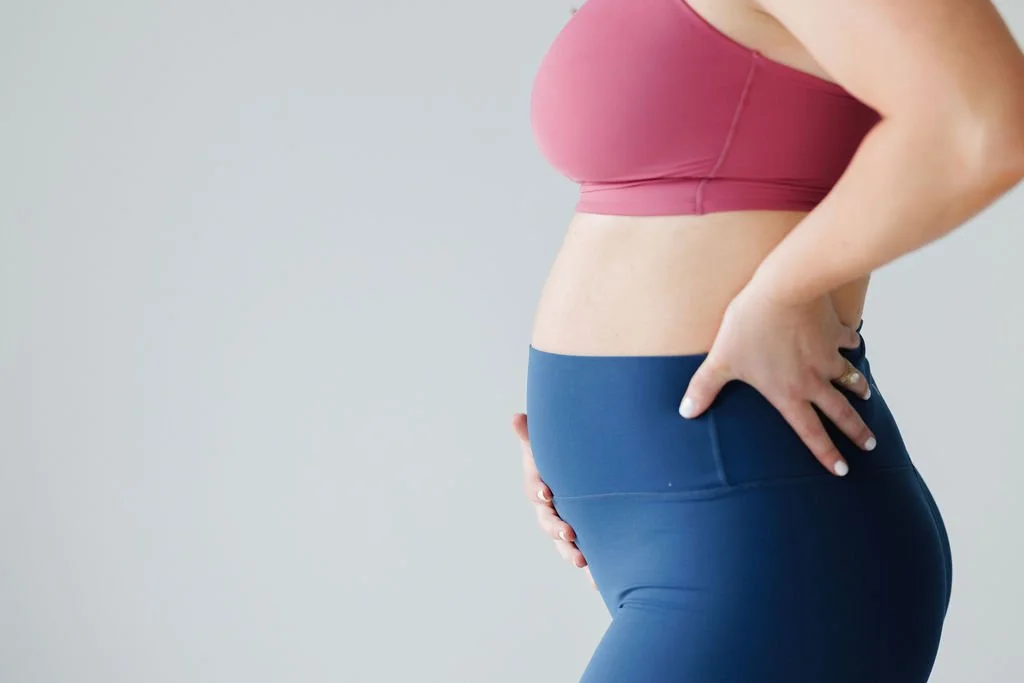Pregnancy Sleep Tips: Finding Comfort Without the Pillow Fort
Getting a good night's sleep during pregnancy can feel like an impossible task. Between an ever-growing belly, shifting weight distribution, and hormonal changes, many expecting parents find themselves constantly adjusting pillows, switching positions, and struggling to find relief from aches and pains.
The good news? Small adjustments can make a big difference in sleep quality and overall comfort. Here’s what research says about sleep during pregnancy and how to improve it.
Why Is Sleep So Challenging During Pregnancy?
According to the National Sleep Foundation, up to 78% of pregnant people experience sleep disturbances, especially in the second and third trimesters. This can be due to:
Hormonal changes affecting sleep cycles
Increased pressure on joints and organs
Frequent urination due to an expanding uterus
Heartburn and acid reflux
Changes in blood circulation and oxygen levels
Given these challenges, making small positional changes can be a game-changer in improving sleep quality.
1. Relieving Hip Pain
Hip pain is a common complaint, especially for side sleepers. Research suggests that hip alignment plays a major role in reducing pressure and discomfort. The American Pregnancy Association recommends:
✅ Placing a pillow between your knees and ankles to keep your hips in a neutral position and prevent misalignment.
✅ Rolling slightly forward or backward to shift pressure away from the bony prominence of the femur, known as the greater trochanter.
A 2019 study published in The Journal of Physical Therapy Science found that side sleeping with proper hip support significantly reduces hip and lower back pain in pregnant individuals.
2. Reducing Rib Pain & Supporting Your Belly
As your belly grows, your ribcage expands, and your abdominal muscles stretch, which can lead to discomfort. According to research from the American College of Obstetricians and Gynecologists (ACOG), supporting your trunk can help reduce strain.
✅ Try placing a small rolled-up towel or pillow along your belly or ribs to provide gentle support.
✅ This can help ease the pulling sensation many people feel in their abdominal muscles, especially as they shift into the third trimester.
3. Sleeping Comfortably on Your Back
Many expecting parents worry about sleeping on their backs, especially after the second trimester. While lying flat on your back for long periods may reduce blood flow due to pressure on the vena cava (a major vein), research suggests that slight adjustments can make back sleeping safer.
A 2021 study published in The Journal of Physiology found that reclining at a 30-degree angle or placing a pillow under one side reduces compression on blood vessels while still allowing for comfort.
✅ If you prefer sleeping on your back, try propping yourself up at least 30 degrees to maintain circulation.
✅ Alternatively, placing a pillow under one side of your back can provide a slight tilt, avoiding direct pressure on the vena cava while still feeling natural.
Do You Really Need a Pregnancy Pillow?
While pregnancy pillows are marketed as essential, they’re not a necessity for everyone. Studies show that standard pillows can provide just as much support when placed correctly.
If you’re not experiencing pain or discomfort, you don’t need to change anything. But if you are, try using a regular pillow for support before investing in a specialty pregnancy pillow.
Final Thoughts: Small Adjustments, Big Relief
Getting comfortable sleep during pregnancy doesn’t have to mean wrestling a giant pillow fort every night. By making small changes—such as using a pillow between the knees, adding a slight recline, or supporting your belly—you can improve your sleep quality and wake up feeling more refreshed.
If you are struggling with consistent aches and pains, don’t hesitate to reach out!

